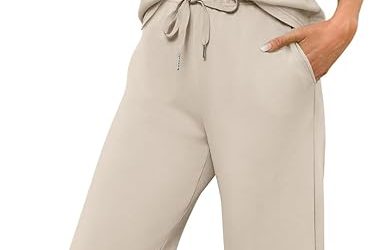Discover how American women are redefining style through environmental responsibility and ethical consumption

The sustainable fashion revolution reached a tipping point in 2025. It transformed from a niche movement into the new standard for conscious American consumers. Women across the United States are demanding transparency, environmental responsibility, and ethical practices from their favorite brands. They refuse to compromise on style, quality, or personal expression. This year’s sustainable trends range from circular fashion innovations to regenerative materials and zero-waste production. They prove that environmental consciousness and cutting-edge style are inseparable. Sustainable Women’s Fashion
Circular Fashion: The Closed-Loop Revolution Sustainable Women’s Fashion
Redefining Fashion’s Linear Model
Consumers are pushing for more sustainability in the fashion industry. They are driving brands to adopt circular fashion models. These models keep clothes in use longer and out of landfills. This fundamental shift is reshaping how we think about clothing ownership and consumption.
Key Circular Fashion Principles:Sustainable Women’s Fashion
- Design for longevity: Creating pieces that last decades, not seasons
- Take-back programs: Brands accepting worn items for recycling or recycling
- Rental and sharing models: Access over ownership approaches
- Repair services: Extending garment life through professional mending
- Material recovery: Breaking down old clothes into new fibers
Leading Circular Fashion Brands: Think brands like Eileen Fisher and Amour Vert. They’re not just designing stylish and comfy long pants. They’re also rolling out take-back programs. These programs make it easy to recycle and reuse clothing.
The Business Case for Circular FashionS ATTAINABLE Women’s Fashion
Environmental Benefits: Sustainable Women’s Fashion
- Waste reduction: Diverting textile waste from landfills
- Resource conservation: Using existing materials instead of new production
- Carbon footprint reduction: Lower emissions through extended product life
- Water savings: Reducing the need for resource-intensive new production
- Chemical reduction: Less dyeing and treatment processes
Economic Advantages: Sustainable Women’s Fashion
- Cost efficiency: Utilizing existing materials reduces raw material costs
- Customer loyalty: Environmentally conscious consumers become brand advocates
- Innovation driver: Pushing companies to develop creative solutions
- Market differentiation: Standing out in crowded fashion marketplace

Made in USA: RESTORING Fashion Production
The American Manufacturing Renaissance Sustainable Women’s Fashion
Made in the USA, deadstock and certified organic materials, and fair labor standards are gaining prominence. Limited-run batches, Eco-friendly packaging, and carbon-neutral production are becoming the gold standards. They are essential for sustainable fashion brands prioritizing local production.
Benefits of USA-Made Fashion: Sustainable Women’s Fashion
- Reduced carbon footprint: Shorter transportation distances
- Quality control: Closer oversight of production processes
- Fair labor practices: Working within US labor protection laws
- Economic support: Supporting American jobs and communities
- Supply chain transparency: Easier to verify ethical practices
- Faster turnaround: Reduced lead times for production and delivery
Notable USA-Made Sustainable Brands:
- Whimsy + Row: Creating Uber-sustainable high-quality garments with feminine tops & matching sets
- Eileen Fisher: Long-standing commitment to American manufacturing and circular practices
- Koan: Premium basics made with Egyptian cotton in certified facilities
- Elizabeth Suzanne: Slow fashion made in Nashville with sustainable practices
The Premium American Aesthetic
Quality Indicators:
- Superior construction: American-made often means better craftsmanship
- Premium materials: Access to high-quality domestic and imported fabrics
- Attention to detail: Small-batch production allows for careful finishing
- Durability focus: Built to last rather than disposable fashion
- Timeless design: Classic American style that transcends trends
Innovative Sustainable Materials
Next-Generation Eco-Fabrics
The materials revolution is transforming sustainable fashion. These breakthrough fabrics act better than traditional options. They dramatically reduce environmental impact.
Revolutionary Sustainable Materials:
- Mushroom leather: My cilium-based leather alternatives
- Pineapple leaf fiber: Pilates made from agricultural waste
- Orange fiber: Citrus byproduct transformed into silk-like material
- Seaweed fiber: SeaGull yarn with natural skincare properties
- Lab-grown cotton: Biologically produced without farming
Recycled and Recycled Materials:
- Ocean plastic: Turning ocean waste into performance fabrics
- Post-consumer cotton: Recycled cotton from textile waste
- Deadstock fabrics: Using excess inventory from other productions
- Recycled wool: Breaking down wool garments into new fibers
- Recycled cashmere: Transforming luxury waste into new products
Performance Meets Sustainability
Advanced Eco-Fabric Properties:
- Moisture-picking: Natural fibers with technical performance
- Antimicrobial: Inherently odor-resistant sustainable materials
- UV protection: Natural sun protection from plant-based fibers
- Temperature regulation: Smart materials that adapt to body heat
- Biodegradable: Materials that return safely to earth

Water-Conscious Production
Revolutionary Water-Saving Technologies
Making Eco-friendly fashion choices doesn’t need going full granola or going broke, and Warp + Weft is proof. While a typical pair of jeans takes around 1500 gallons of water to produce (crazy, right?), Warp + Weft’s take less than 10 gallons thanks to its innovative water recycling technology.
Water-Saving Innovations:
- Closed-loop systems: Recycling and reusing production water
- Water less dyeing: New technologies that remove water in coloring
- Efficient washing: Laser and ozone treatments reducing water needs
- Organic cotton: No irrigation required for rain-fed organic farming
- Other fibers: Materials requiring minimal water for production
Brands Leading Water Conservation:
- Warp + Weft: Revolutionary denim production using minimal water
- Levi’s: Water<Less® technology reducing water use in jeans production
- Patagonia: Comprehensive water stewardship across all products
- Reformation: Tracking and reducing water footprint across operations
The True Cost of Water in Fashion
Environmental Impact:
- Water pollution: Chemical runoff from dyeing and treatment
- Aquifer depletion: Overuse of groundwater resources
- Ecosystem disruption: Impact on local water supplies and wildlife
- Climate contribution: Energy used for water heating and treatment
Transparency and Traceability
Supply Chain Visibility
We need to rank transparency on production volumes. We also need to focus on volume reduction targets. Displacing new clothing with repaired or enduring factored items is crucial as well. Setting a floor price for clothing is necessary. These steps are essential according to industry experts pushing for comprehensive transparency standards.
Transparency Requirements:
- Material sourcing: Full disclosure of fiber origins and processing
- Production locations: Detailed information about manufacturing facilities
- Labor practices: Working conditions and wage transparency
- Environmental impact: Carbon footprint, water use, and waste data
- Chemical usage: Full disclosure of dyes, treatments, and finishes
Tools for Transparency:
- Supply chain mapping: Digital tracking of every production step
- Third-party audits: Independent verification of practices
- Blockchain technology: Immutable records of product journey
- Impact reporting: Regular updates on environmental and social metrics
- Consumer access: Easy access to transparency information
The Power of Informed Consumers
Consumer Expectations:
- Brand accountability: Expecting companies to take responsibility for impact
- Accessible information: Easy-to-understand sustainability reporting
- Continuous improvement: Ongoing progress toward better practices
- Problem acknowledgment: Honest discussion of challenges and solutions

Slow Fashion and Capsule Wardrobes
Quality Over Quantity Philosophy
At MADE FREE, sustainability isn’t just a trend—it’s a way of doing business. Every buy directly supports makers in India with fair wages. It provides them dignified work. This helps to combat human trafficking and poverty. Additionally, it promotes slow fashion principles.
Slow Fashion Characteristics:
- Timeless design: Classic styles that don’t go out of fashion
- Quality construction: Built to last for years or decades
- Ethical production: Fair wages and safe working conditions
- Limited quantities: Small-batch production preventing overstock
- Mindful consumption: Encouraging thoughtful purchases
Building a Sustainable Capsule Wardrobe:
- Foundation pieces: High-quality basics in neutral colors
- Versatile items: Pieces that work for multiple occasions
- Cost-per-wear: Investing in items you’ll use often
- Personal style: Choosing pieces that show your authentic aesthetic
- Maintenance planning: Caring for clothes to extend their life
The Economics of Slow Fashion
Long-term Value:
- Lower cost-per-wear: Expensive items become economical over time
- Reduced shopping frequency: Less time and energy spent on shopping
- Higher resale value: Quality pieces keep value longer
- Wardrobe satisfaction: Loving everything you own
- Environmental savings: Reduced consumption impact
Zero-Waste Design and RECYCLING
Innovative Design Approaches
Zero-waste design is revolutionizing fashion production by eliminating textile waste through innovative pattern-making and construction techniques.
Zero-Waste Design Principles:
- Pattern efficiency: Designing patterns that use 100% of fabric
- Modular construction: Creating pieces from geometric shapes
- Transformable garments: Designs that serve multiple functions
- Waste integration: Using scraps as design elements
- Digital design: Computer modeling to improve material use
Recycling and Reconstruction:
- Vintage reimagining: Updating old garments with modern techniques
- Material combination: Mixing different fabrics and textures
- Size adaptation: Reconstructing oversize vintage into contemporary fits
- Decorative enhancement: Adding sustainable embellishments and details
- Seasonal updates: Adapting pieces for different weather conditions
Brands Embracing Zero-Waste
Zero-Waste Pioneers:
- Toml: Zero-waste production using textile waste from other factories
- Study NY: Innovative patterns that remove cutting waste
- Christopher Rayburn: Remade collection using military surplus
- Alabama Chain: Hand-sewn pieces using organic cotton jersey scraps

Sustainable Fashion Technology
Digital Innovation for Sustainability
Technology is enabling more sustainable fashion practices through improved design, production, and consumer engagement processes.
Tech-Enabled Sustainability:
- 3D design software: Reducing sample production and waste
- Digital printing: Precise dye application reducing chemical use
- AI improvement: Improving demand forecasting to reduce overproduction
- Virtual fitting: Reducing returns through better size choice
- Blockchain tracking: Ensuring authenticity and traceability
Smart Material Innovations:
- Phase-change materials: Fabrics that adapt to body temperature
- Moisture-responsive fibers: Materials that react to humidity
- Self-cleaning fabrics: Reducing washing frequency and water use
- Biodegradable synthetics: Performance materials that break down safely
- Solar-responsive dyes: Colors that change with UV exposure
Sustainable Shopping Strategies
Making Informed Choices
For clean, conscious fashion that prioritizes comfort and sustainability, conscious consumers are developing sophisticated strategies for building sustainable wardrobes.
Sustainable Shopping Guidelines:
- Research brands: Understanding company practices and values
- Check certifications: Looking for BOTS, TKO-TEX, and Fair Trade labels
- Read labels: Understanding fabric content and care instructions
- Consider cost-per-wear: Calculating true value of purchases
- Plan purchases: Avoiding impulse buying and fast fashion
Where to Shop Sustainably:
- Brand direct: Supporting companies with verified sustainable practices
- Certified retailers: Shopping at stores with sustainability commitments
- Secondhand markets: Thrift stores, consignment, and online resale
- Rental services: Accessing special occasion wear without ownership
- Local makers: Supporting regional artisans and small businesses
Budget-Friendly Sustainable Options
Accessible Sustainable Fashion:
- Secondhand shopping: Finding quality pieces at lower prices
- Sample sales: Accessing designer sustainability at reduced prices
- End-of-season clearance: Buying quality sustainable pieces on sale
- Clothing swaps: Exchanging pieces with friends and community
- DIY recycling: Updating existing pieces with sustainable techniques

The Future of Sustainable Fashion
Emerging Trends and Technologies
Next-Generation Innovations:
- Bio-fabricated materials: Growing materials in laboratories
- Closed-loop recycling: Full material recovery and reuse
- Rental subscription models: Access-based fashion consumption
- Personalized production: Made-to-order reducing waste
- Regenerative agriculture: Farming that improves soil and ecosystems
Cultural Shifts:
- Conscious consumption: Thoughtful purchasing decisions
- Transparency demands: Expecting full supply chain visibility
- Local prioritization: Supporting regional production and materials
- Repair culture: Normalizing clothing maintenance and mending
- Education emphasis: Understanding fashion’s environmental impact
The Role of American Consumers
Driving Change Through Demand:
- Supporting sustainable brands: Using purchasing power for environmental good
- Demanding transparency: Pushing companies to reveal practices
- Sharing knowledge: Educating others about sustainable options
- Policy advocacy: Supporting legislation for environmental protection
- Lifestyle integration: Making sustainability a core value
Regional Sustainable Fashion in America
Coast-to-Coast Consciousness
West Coast Innovation:
- Silicon Valley influence: Technology-driven sustainability solutions
- California regulations: Strict environmental standards driving innovation
- Portland makers: Strong local artisan and maker communities
- Sustainable lifestyle integration: Environmental consciousness as lifestyle
East Coast Tradition:
- New York fashion leadership: Sustainable luxury and high fashion
- Boston innovation: Technical textiles and performance sustainability
- Southern regenerative agriculture: Organic cotton and fiber production
- Appalachian craftsmanship: Traditional techniques with modern applications
Midwest Values:
- Agricultural innovation: Sustainable fiber production and farming
- Manufacturing heritage: American-made quality and craftsmanship
- Community support: Local business and maker communities
- Practical sustainability: Durable, functional sustainable fashion
Investment Strategies for Sustainable Wardrobes
Building Value Through Conscious Choices
High-Value Investment Areas:
- Outerwear: Quality coats and jackets that last decades
- Work wardrobe: Professional pieces in sustainable materials
- Denim: Well-made jeans from water-conscious producers
- Footwear: Sustainable shoes from ethical manufacturers
- Versatile basics: High-quality fundamentals in organic materials
Budget Allocation Strategy:
- 70% basics: Foundation pieces in sustainable materials
- 20% statement pieces: Special items that show personal style
- 10% experimental: Trying new sustainable brands and materials
Cost-Advantage Analysis
Long-term Financial Benefits:
- Reduced replacement costs: Durable items last longer
- Higher resale value: Sustainable pieces keep value
- Lower care costs: Quality materials need less special care
- Health benefits: Avoiding toxic chemicals in clothing
- Social impact: Supporting ethical labor practices
Care and Maintenance: Extending Garment Life
Sustainable Garment Care
Eco-Friendly Care Practices:
- Cold water washing: Saving energy and preserving fabrics
- Air drying: Reducing energy use and fabric wear
- Natural stain treatments: Using non-toxic cleaning techniques
- Proper storage: Protecting garments from damage
- Professional care: Using Eco-friendly dry cleaning when needed
Repair and Restoration:
- Basic mending skills: Learning to fix small issues
- Professional alterations: Updating fit as body changes
- Refreshing techniques: Removing pilling and restoring appearance
- Hardware replacement: Fixing zippers, buttons, and fasteners
- Style updates: Modernizing older pieces with small changes
The Bottom Line: Fashion’s Sustainable Future
Sustainable women’s fashion in 2025 is more than an environmental trend. It is a fundamental reimagining of how we create clothing. We also rethink how we consume and care for it. This year’s sustainable trends highlight two things. Circular fashion systems remove waste. Some innovative materials work better. Conscious consumption and cutting-edge style are not just compatible. They are complementary and also protect the planet.
The most exciting development is the democratization of sustainable fashion, making environmental consciousness accessible across all budgets and lifestyles. Sustainable fashion in 2025 offers solutions that serve both personal style and planetary health. This is achieved through revolutionary water-saving technologies. It also involves transparent supply chains. Innovative materials like mushroom leather and ocean plastic play a part as well.
Success in sustainable fashion relies on understanding a crucial fact. Every buy is a vote for the kind of industry you want to support. By choosing brands that focus on transparency, American women are driving a transformation. They focus on environmental responsibility and ethical practices. This change will help both current consumers and future generations.
The sustainable fashion revolution of 2025 proves that the future of fashion is not about choosing between style and sustainability. It’s about embracing a new paradigm. Environmental consciousness enhances creative expression and personal style rather than limiting them.
Sustainable fashion goes beyond protecting the planet. It is about creating a fashion system that serves everyone better. This includes the makers, the wearers, and the earth itself.
Ready to embrace sustainable fashion in 2025? Start with one conscious choice. Support a transparent brand. Invest in a quality piece. Learn about the true cost of your clothing.
How are you incorporating sustainability into your fashion choices? Share your favorite sustainable brands in the comments. Add your Eco-conscious styling tips as well. Together, we can make fashion a force for positive change!



0 Comments